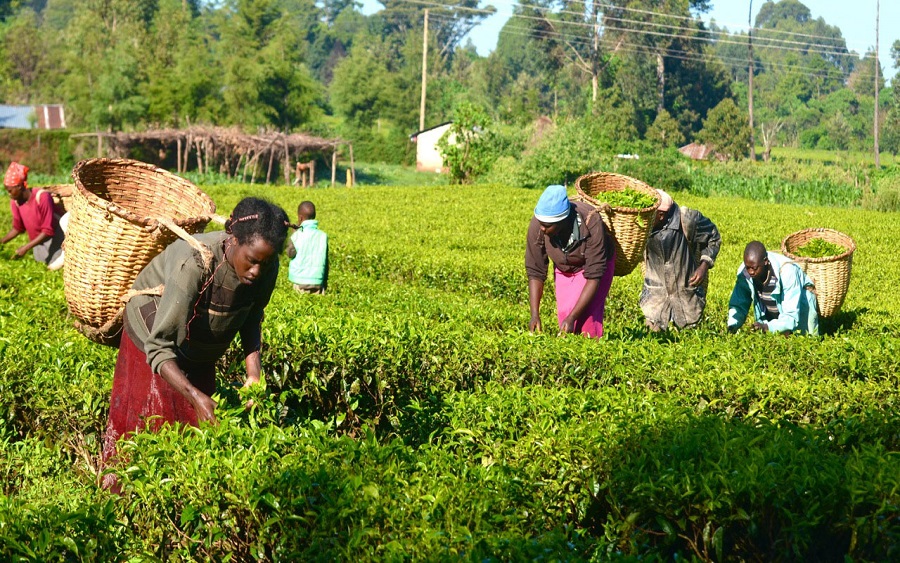Subsistence farming refers to farming and associated activities which together form a livelihood strategy where the main output is consumed directly, where there are few if any purchased inputs and where only a minor proportion of output is marketed.
The term ‘smallholder farmers’’ is used more generally to describe rural producers, predominantly in developing countries, who farm using mainly family labour and for whom the farm provides the principal source of income. These systems have been characterized as ‘‘complex, diverse and risk-prone’’.
UN tasks Nigeria on rights of older persons
Jos Catholic archbishop calls for dialogue, peaceful coexistence
Farms are generally small, often held under traditional or informal tenure, and are in marginal or risk-prone environments. Yields are low and farmers lack the capacity to increase yields.
Most of the inhabitants of our rural areas are subsistence farmers. They are responsible for very high proportions of food and cash crop production. Subsistence farmers are smallholders who consume the majority of their farm output and who are held back from participating more actively in commercially oriented agriculture by a variety of factors. These factors constrain the promotion of commercialization of agricultural activities of rural producers, including notably low investment in infrastructure, limited input/output market linkages, and insufficient technical and institutional support and materials/equipment.
There is an urgent need to strengthen the smallholder farmer’s innovation systems to address food insecurity, promote resilient livelihoods to ensure adequate food availability and access; improving utilization with a focus on enhancing stability through vulnerability and risk reduction.
The emphasis now is on agricultural productivity, production enhancement and commercializing farming as an enterprise. This will involve developing the capacity of these smallholder farmers to sustainably increase yields and be profitable. Smallholders have become increasingly vulnerable to a wide variety of emerging climatic, health, price, and financial risks and challenges as well. These emerging challenges lead many smallholder farmers to pursue livelihood strategies that involve lower-risk and lower-yielding agricultural activities.
Such responses can help smallholders cope with adverse events, but they also cause poverty to persist, trapping smallholders in a cycle of little or no profits, with limited opportunities to undertake more productive and innovative activities.
As developing countries’ populations grow larger, richer, and more urban, the intensification of agricultural production will occur in rapidly changing agri-food value chains.
Subsistence farming has to be replaced with profitable farming that improves livelihoods, ensures food security and sustainably utilizes the environment. Therefore, it becomes imperative to initiate actions and interventions that seek to address these problems. This will require an integrated approach of methodologies.
Many smallholders are excluded from productivity-enhancing financial services and are unable to secure much-needed fixed and working capital, which ranges from land and buildings to machinery, high-yielding seeds, and fertilizer. One of the major financing challenges facing smallholders is their limited access to financial options and services for keeping their savings in formal accounts and their lack of buffers against adversity and shocks.
Linking smallholders to agricultural value chains is an important component of building smallholder resistance to shocks and improving their productivity and livelihoods. However, many smallholders in transforming and transformed economies are unable to participate in value chains because they cannot meet increasingly specific and strict quality standards, high volume requirements, and logistics specifications.
Similarly, digital technologies can offer smallholder farmers a wealth of opportunities to acquire real-time market information—on, for example, prices, demand, quality standards, and weather. With this information, farmers can make better-informed production and marketing decisions and participate more actively in value chains. Access to such technologies needs to be accompanied by efforts from the public and private sectors to improve both the information content of digital technologies and the ability of potential users to employ these technologies.
There are significant opportunities to move smallholder farmers from subsistence to a more sustainable, commercially viable form of agriculture in Nigeria. However, there must be a multi-sectoral approach aimed at upgrading and achieving an efficient, economic and sustainable agricultural production capable of meeting not only our food security need but regional and international markets, while at the same time ensuring a fair and equitable distribution of wealth and environmental sustainability. With the current global turn of events, it is imperative to not only drive aggressive economic diversification but also ensure the food security and sustainability of livelihoods especially for the common man.
With 43 per cent of Nigeria’s population below the age of 15, millions of young people entering the job market looking for work across the country, even under the most favourable projections, only less than a third will be able to find wage jobs. Farming and informal sector jobs in the agri-food system will be a major source of employment and livelihood for these youth.
Smallholder farming is vital here because it is likely to determine whether millions of young Nigerians are productively engaged in agriculture and the informal sector or whether they join the ranks of the unemployed or underemployed poor. The latter scenario will continue to bring major political risks as seen today across northern Nigeria. Fortunately, policy and public investments can rapidly improve the profitability and attractiveness of agriculture beyond the toil and small benefits of subsistence farming. I believe this departure from smallholder agriculture can represent a major win-win opportunity for young people, the government, and society at large.

 Join Daily Trust WhatsApp Community For Quick Access To News and Happenings Around You.
Join Daily Trust WhatsApp Community For Quick Access To News and Happenings Around You.


